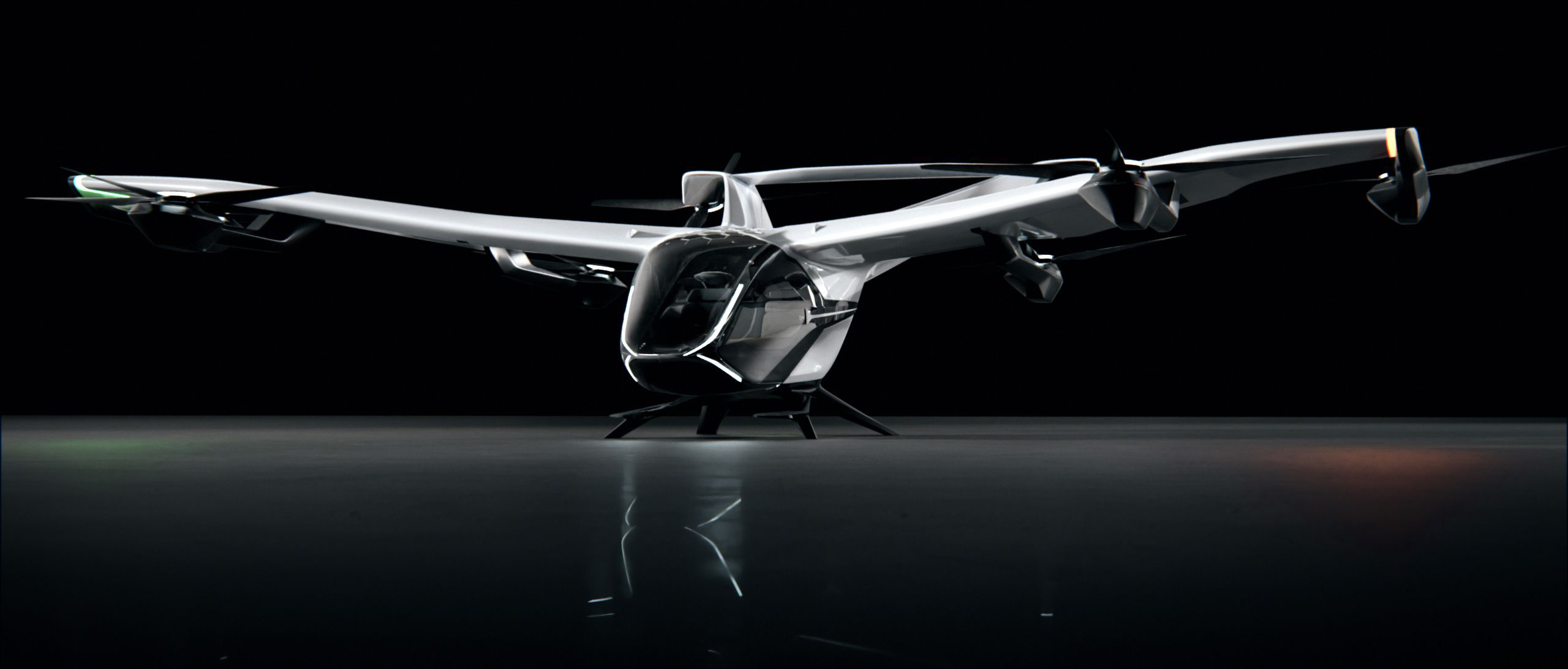空客公司:空中出租车来得比你想象的还要快
空中客车公司(Airbus)首次展示了一款四座原型机,有望在2025年投入商业运营。该公司希望借此进军地面飞行出租车这一新兴市场。
这种电动垂直起降车辆(eVTOL)比汽车来得更快,比公共交通更具独享性,比直升机更安静。如果这种车辆能够实现商业落地,这将是一项可以彻底改变城市交通的创新。
其潜力引人注目:空中出租车能够大幅缩短在严重拥堵地区的通行时间,从曼哈顿市中心到肯尼迪国际机场(JFK International Airport)的45分钟行程,将被缩短为只需5分钟。发展中国家对这项技术尤为感兴趣,因为其巨型城市的发展速度往往会超过基础设施的支撑力。9月22日,一家中国公司从德国的Volocopter公司订购了eVTOL。
“我们看到了改变城市出行方式的需求。”空客直升机(Airbus Helicopter)的首席执行官布鲁诺·埃旺在9月21日的公司活动中说,“基于我们过去和现在的所有经验,我们相信我们正处于有利位置,我们有能力领导这个市场的未来。”

据该公司介绍,CityAirbus NextGen计划于2023年实现首次飞行。这款机型配备固定机翼、分裂尾翼和8个电动螺旋桨,巡航速度最高可以达到120公里每小时。
其电池能够续航长达80公里。着陆时的噪音(人耳最容易听到的声音)预计最高为70分贝,低到足以与日常交通的声音融为一体。
“我们在eVTOL设计的方方面面花费了数十万小时的工程时间,研究从结构力学到空气动力学、电力推进的问题。”这家公司的城市交通负责人约尔格·米勒在9月21日的一场活动中称。
该公司表示,由于公众接受度与技术开发同样重要,空客的eVTOL将符合欧洲航空监管机构——欧洲航空管理局(EASA)制定的最高安全认证标准。
空客直升机的埃旺甚至估计,每年对eVTOL的需求可能在1000辆左右,该公司取消了除eVTOL以外进入运营车队的任何计划。
就像机器人出租车(robotaxi)一样,在未来,eVTOL将通过计算机控制自己。这在经济上将更加可行,因为人工操作人员占用了原本可以用来运送付费乘客的空间。
“我们的目标是自动驾驶。”米勒说,“我们会做到逐步引入,最终全部实现。在一定程度上,它们将完全自主飞行。当然,在那之前,将有飞行员驾驶。”
早在2019年10月,空客的竞争对手——美国航空航天巨头波音公司(Boeing)就同意与豪华跑车制造商保时捷(Porsche)合作,打造一款城市空中交通的高端原型车。不过,波音此后一直对这一项目一直保持沉默。波音公司目前没有自营的民用直升机项目。

或许,空客最激烈的竞争对手来自其他欧洲公司。财力雄厚的中国科技公司腾讯成为了总部位于慕尼黑的Lilium公司的投资者之一。后者还宣传称,空客公司的前首席执行官汤姆·恩德斯是其董事会成员。上周,该公司通过SPAC(特殊目的收购公司)空白支票公司借壳上市,共筹集了5.84亿美元。
另一家德国初创企业Volocopter表示,希望在2024年巴黎夏季奥运会(Paris Summer Olympics)前测试其双座VoloCity eVTOL汽车。戴姆勒(Daimler)是该公司的投资者之一。9月22日,该公司宣布了一项协议,将通过与中国本土汽车制造商吉利成立一家合资企业,以走进中国市场。吉利将出资购买150架Volocopter飞机。
其他初创公司及其支持者包括Uber的Joby、谷歌(Google)创始人之一拉里·佩奇的Kitty Hawk,以及美国联合航空(United Airlines)和Stellantis的Archer Aviation。
空客直升机的研发主管托马斯·克雷辛斯基表示,与其他竞争对手相比,他们的公司有一个关键优势。“我们是世界上唯一一家以实际尺寸测试这类飞行器的公司。”他解释说,对于所有的旋翼飞机来说,建造模型的复杂程度随着飞行器尺寸的增加而增加。“做小型模型其实非常容易。”
就如人类最初的飞行尝试一样,多家公司正在大量试验各种eVTOL概念,但尚未就某一种设计达成一致。一些工程师正在尝试高效缩小飞机体积,而另一些工程师则更青睐功能更像小型直升机的飞机,或者将这两种概念混合的飞机。
空客公司表示,为了在悬停和前进飞行之间取得更好的平衡,空客新的eVTOL飞机结合了之前两架演示飞机(第一代CityAirbus和Vahana)专业技术。
今年7月,据保时捷咨询公司(Porsche Consulting)估计,飞行20公里至50公里的城市空中出租车市场的年销售额在2030年将为40亿美元,五年后的2035年,这一数字将激增至210亿美元。不过,该公司在7月的一份研究报告中称,经济形势仍然“充满挑战和高度不确定性”。
“这一领域的参与者需要表现出十足的承诺,需要有至少10年的长远眼光。因为在2030年之前,这一领域将看不到任何积极的投资回报。”这家公司写道。(财富中文网)
编译:杨二一
空中客车公司(Airbus)首次展示了一款四座原型机,有望在2025年投入商业运营。该公司希望借此进军地面飞行出租车这一新兴市场。
这种电动垂直起降车辆(eVTOL)比汽车来得更快,比公共交通更具独享性,比直升机更安静。如果这种车辆能够实现商业落地,这将是一项可以彻底改变城市交通的创新。
其潜力引人注目:空中出租车能够大幅缩短在严重拥堵地区的通行时间,从曼哈顿市中心到肯尼迪国际机场(JFK International Airport)的45分钟行程,将被缩短为只需5分钟。发展中国家对这项技术尤为感兴趣,因为其巨型城市的发展速度往往会超过基础设施的支撑力。9月22日,一家中国公司从德国的Volocopter公司订购了eVTOL。
“我们看到了改变城市出行方式的需求。”空客直升机(Airbus Helicopter)的首席执行官布鲁诺·埃旺在9月21日的公司活动中说,“基于我们过去和现在的所有经验,我们相信我们正处于有利位置,我们有能力领导这个市场的未来。”
据该公司介绍,CityAirbus NextGen计划于2023年实现首次飞行。这款机型配备固定机翼、分裂尾翼和8个电动螺旋桨,巡航速度最高可以达到120公里每小时。
其电池能够续航长达80公里。着陆时的噪音(人耳最容易听到的声音)预计最高为70分贝,低到足以与日常交通的声音融为一体。
“我们在eVTOL设计的方方面面花费了数十万小时的工程时间,研究从结构力学到空气动力学、电力推进的问题。”这家公司的城市交通负责人约尔格·米勒在9月21日的一场活动中称。
该公司表示,由于公众接受度与技术开发同样重要,空客的eVTOL将符合欧洲航空监管机构——欧洲航空管理局(EASA)制定的最高安全认证标准。
空客直升机的埃旺甚至估计,每年对eVTOL的需求可能在1000辆左右,该公司取消了除eVTOL以外进入运营车队的任何计划。
就像机器人出租车(robotaxi)一样,在未来,eVTOL将通过计算机控制自己。这在经济上将更加可行,因为人工操作人员占用了原本可以用来运送付费乘客的空间。
“我们的目标是自动驾驶。”米勒说,“我们会做到逐步引入,最终全部实现。在一定程度上,它们将完全自主飞行。当然,在那之前,将有飞行员驾驶。”
早在2019年10月,空客的竞争对手——美国航空航天巨头波音公司(Boeing)就同意与豪华跑车制造商保时捷(Porsche)合作,打造一款城市空中交通的高端原型车。不过,波音此后一直对这一项目一直保持沉默。波音公司目前没有自营的民用直升机项目。
或许,空客最激烈的竞争对手来自其他欧洲公司。财力雄厚的中国科技公司腾讯成为了总部位于慕尼黑的Lilium公司的投资者之一。后者还宣传称,空客公司的前首席执行官汤姆·恩德斯是其董事会成员。上周,该公司通过SPAC(特殊目的收购公司)空白支票公司借壳上市,共筹集了5.84亿美元。
另一家德国初创企业Volocopter表示,希望在2024年巴黎夏季奥运会(Paris Summer Olympics)前测试其双座VoloCity eVTOL汽车。戴姆勒(Daimler)是该公司的投资者之一。9月22日,该公司宣布了一项协议,将通过与中国本土汽车制造商吉利成立一家合资企业,以走进中国市场。吉利将出资购买150架Volocopter飞机。
其他初创公司及其支持者包括Uber的Joby、谷歌(Google)创始人之一拉里·佩奇的Kitty Hawk,以及美国联合航空(United Airlines)和Stellantis的Archer Aviation。
空客直升机的研发主管托马斯·克雷辛斯基表示,与其他竞争对手相比,他们的公司有一个关键优势。“我们是世界上唯一一家以实际尺寸测试这类飞行器的公司。”他解释说,对于所有的旋翼飞机来说,建造模型的复杂程度随着飞行器尺寸的增加而增加。“做小型模型其实非常容易。”
就如人类最初的飞行尝试一样,多家公司正在大量试验各种eVTOL概念,但尚未就某一种设计达成一致。一些工程师正在尝试高效缩小飞机体积,而另一些工程师则更青睐功能更像小型直升机的飞机,或者将这两种概念混合的飞机。
空客公司表示,为了在悬停和前进飞行之间取得更好的平衡,空客新的eVTOL飞机结合了之前两架演示飞机(第一代CityAirbus和Vahana)专业技术。
今年7月,据保时捷咨询公司(Porsche Consulting)估计,飞行20公里至50公里的城市空中出租车市场的年销售额在2030年将为40亿美元,五年后的2035年,这一数字将激增至210亿美元。不过,该公司在7月的一份研究报告中称,经济形势仍然“充满挑战和高度不确定性”。
“这一领域的参与者需要表现出十足的承诺,需要有至少10年的长远眼光。因为在2030年之前,这一领域将看不到任何积极的投资回报。”这家公司写道。(财富中文网)
编译:杨二一
Hoping to enter the fledgling market for flying taxis at the ground floor, Airbus unveiled a first glimpse of a four-seat prototype that could potentially see commercial liftoff as early as 2025.
Faster than a car, more exclusive than mass transit, and quieter than a helicopter, electric vertical takeoff and landing vehicles (eVTOLs) are the latest innovation that could revolutionize urban transportation—if they ever get off the ground financially.
Their potential is compelling: Air taxis could substantially cut down the travel time in heavily congested areas, turning a 45-minute trip from downtown Manhattan to JFK International Airport into just five. Developing countries are particularly interested in the technology, given their megacities have often grown faster than the infrastructure can support, with a Chinese company ordering eVTOLs from Germany's Volocopter on September 22.
“We see the need to change the way we are traveling in cities,” said Bruno Even, CEO of Airbus Helicopter, during a company event on September 21. "Based on all our experience, past and current, we are convinced we are well positioned to lead this future market."
Scheduled for its first flight in 2023, the CityAirbus NextGen comes equipped with fixed wings, a split tail section, and eight electrically powered propellers and is capable of reaching a cruising speed of 120 kilometers per hour (100 mph), according to the company.
Its battery can last for 80 kilometers, and landing noise—the most audible to human ears—is expected to top out at 70 decibels, low enough to blend in with the sound of everyday traffic.
“We’ve spent hundreds of thousands of engineering hours on all aspects of eVTOL design, starting from structural mechanics to aerodynamics and electric propulsion,” said Jörg Müller, the company's head of urban mobility, at an event on September 21.
Since public acceptance is as important as developing the technology, according to the company, the Airbus eVTOL should meet the highest standards for safety certification set out by European aviation regulator EASA.
Airbus Helicopter's Even estimated annual demand could be around about 1,000 eVTOLs, with the company ruling out any plans to move beyond the sale of eVTOLs into operating fleets itself.
Much like a robotaxi, the goal is for the eVTOL in the future to maneuver itself by computer in order to make the economics more viable. Human operators take up space that could otherwise be used to transport paying customers.
"We are targeting self-piloted autonomous flight," Müller said. "This will progressively come, and we'll introduce it step-by-step, so that at a certain point these vehicles fly fully autonomously. Until then, we'll fly them with a pilot, of course."
Back in October 2019, U.S. aerospace giant Boeing agreed to pair up with luxury sports car manufacturer Porsche to build a prototype for premium urban air mobility. The Airbus rival, which does not operate its own civilian helicopter program, has since been silent about the program, however.
Perhaps Airbus’s stiffest competition, then, may come from other European firms. Munich-based Lilium counts the deep-pocketed Chinese tech company Tencent among investors and boasts former Airbus CEO Tom Enders as a board member. Last week it raised $584 million through a backdoor listing via a blank-check SPAC investment vehicle.
Fellow German startup Volocopter, which counts Daimler among its investors, said hopes to trial its two-seat VoloCity eVTOL in time for the Paris Summer Olympics in 2024. On September 22, it announced a deal to enter the Chinese market via a joint venture with local carmaker Geely, which will purchase 150 Volocopter aircraft.
Other startups (and their backers) include Joby (Uber), Kitty Hawk (Google’s Larry Page), and Archer Aviation (United Airlines and Stellantis).
Airbus Helicopters’ head of development Tomasz Krysinski said his company had a key advantage over other rivals. "We are the only company in the world that tested such a vehicle in real size," he said, explaining that with all rotary-wing aircrafts, the complexity of the task grows with the dimensions of the vehicle. "It's very easy to do something with a mock-up on the small scale."
Much like mankind’s initial attempts at flight, companies are experimenting heavily with various eVTOL concepts and have yet to agree on a single design. Some engineers are effectively shrinking airplanes, while others prefer those that function more like miniature helicopters, or concepts that employ a mix of the two.
Airbus’s new eVTOL merges the combined expertise derived from two previous demonstrators, the first generation CityAirbus and the Vahana, in order to strike a better balance between hovering and forward flight, according to the company.
In July, Porsche Consulting estimated the market for urban air taxies flying 20- to 50-kilometer trips could rise from $4 billion in 2030 to $21 billion annually five years later. Still, the economics are “challenging and fraught with high uncertainty,” the firm said in a July research paper.
“Players in this space need to show serious commitment and need to take the long view lasting at least 10 years, with no positive return on investment in sight before 2030,” it wrote.













